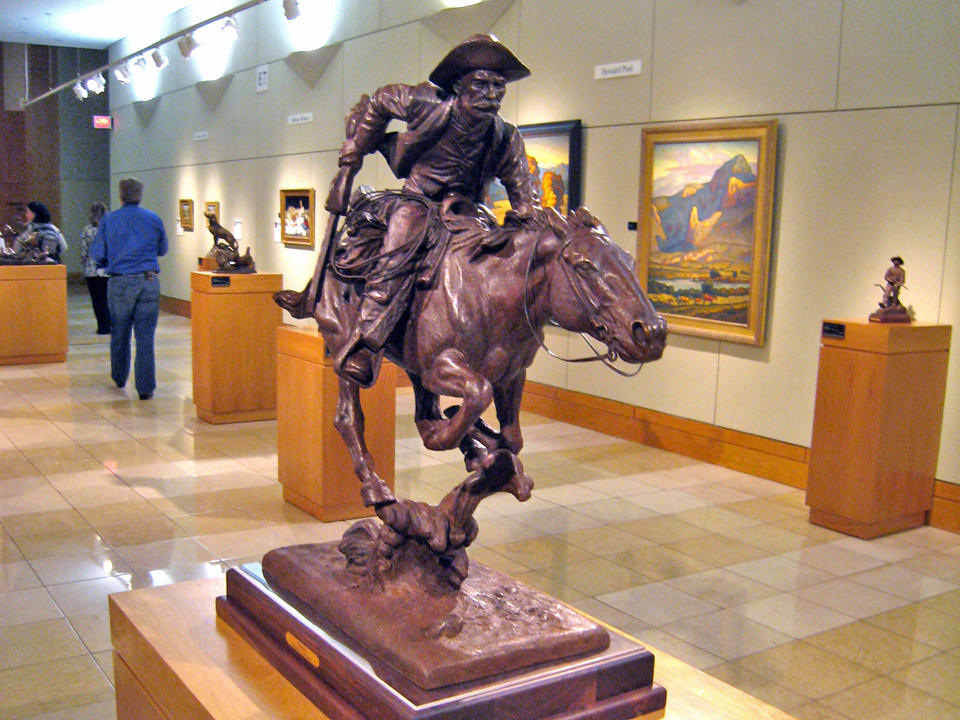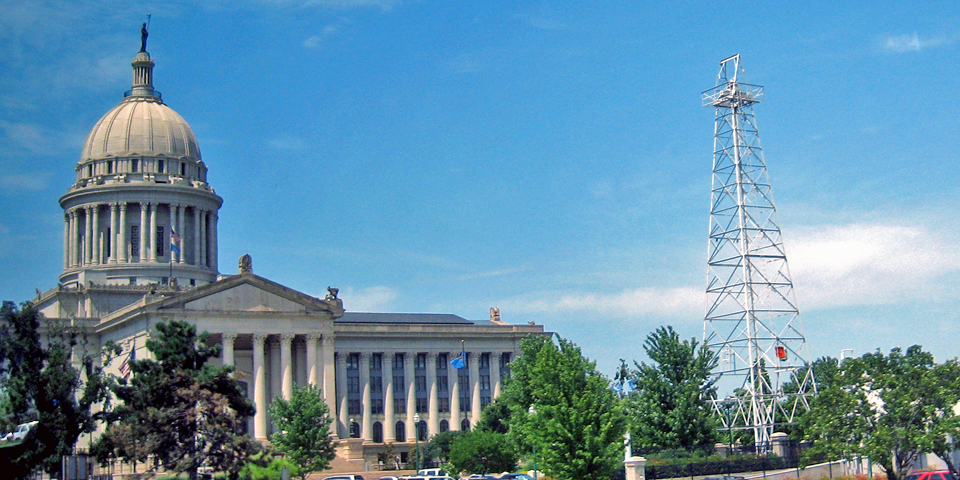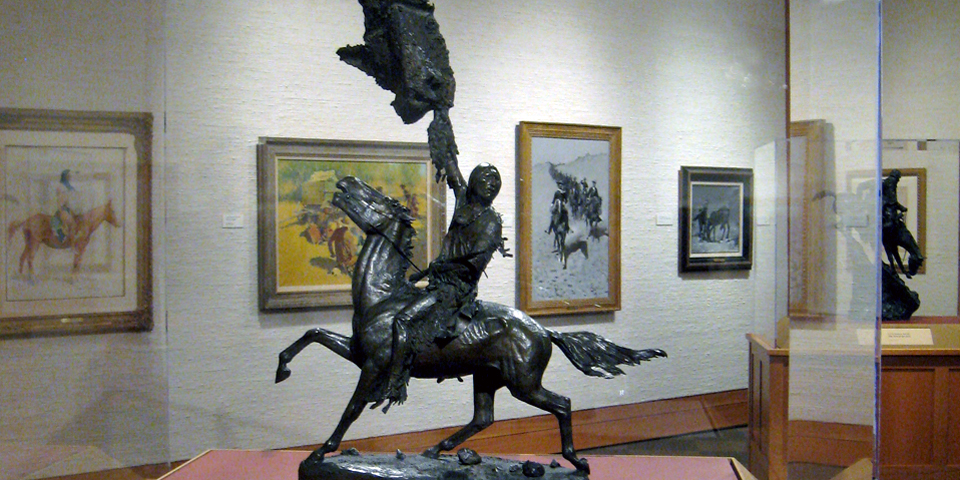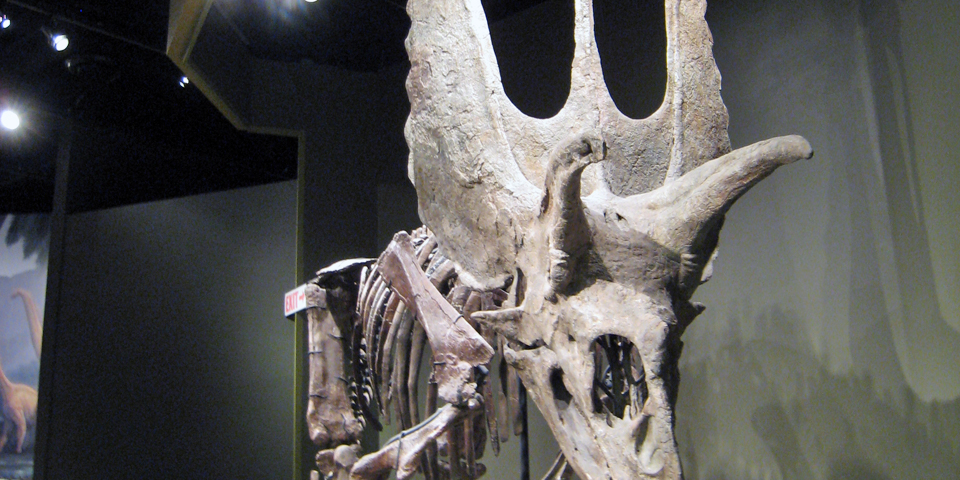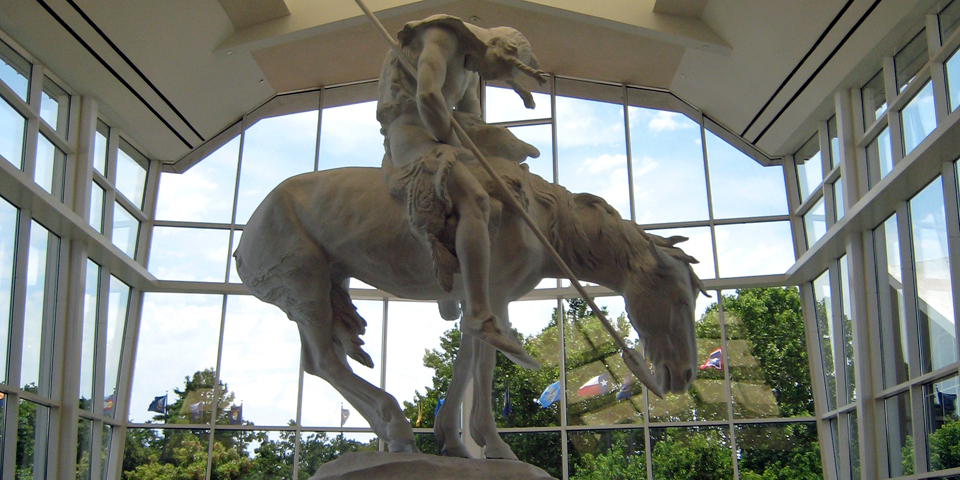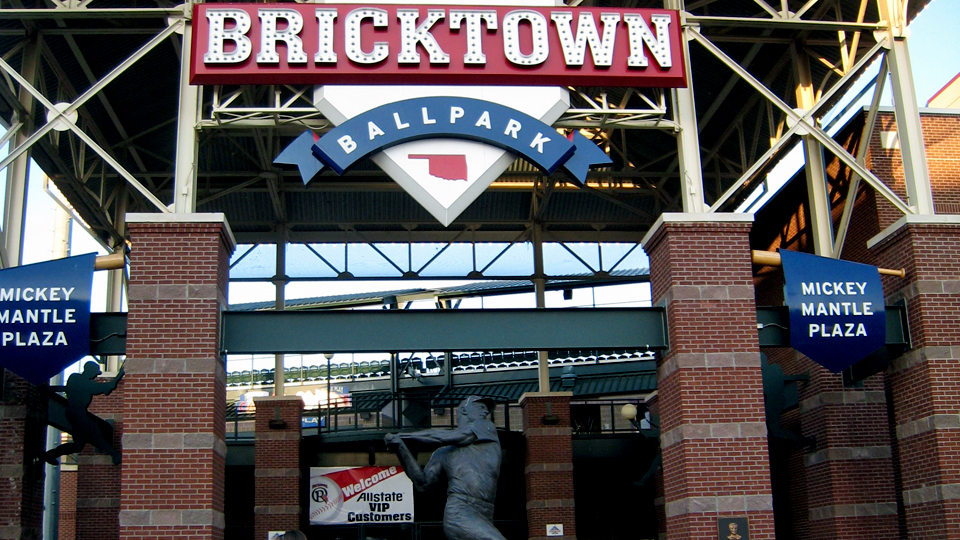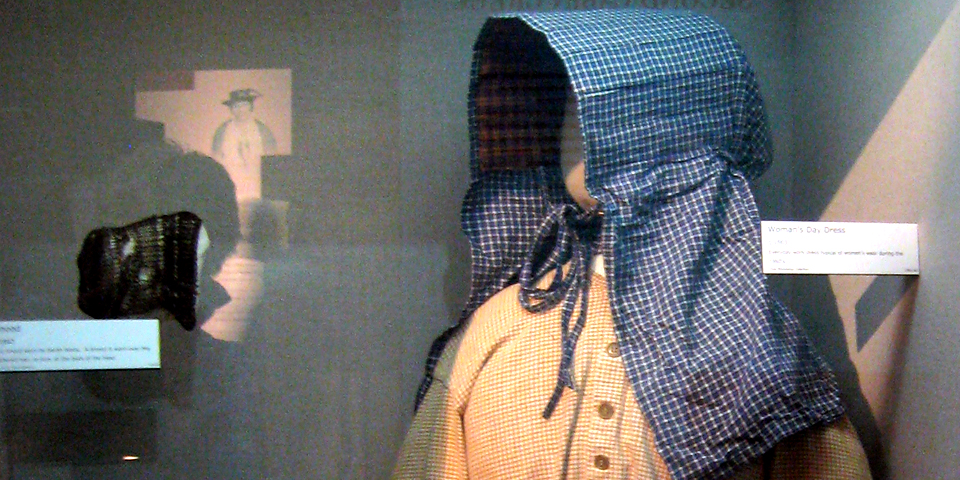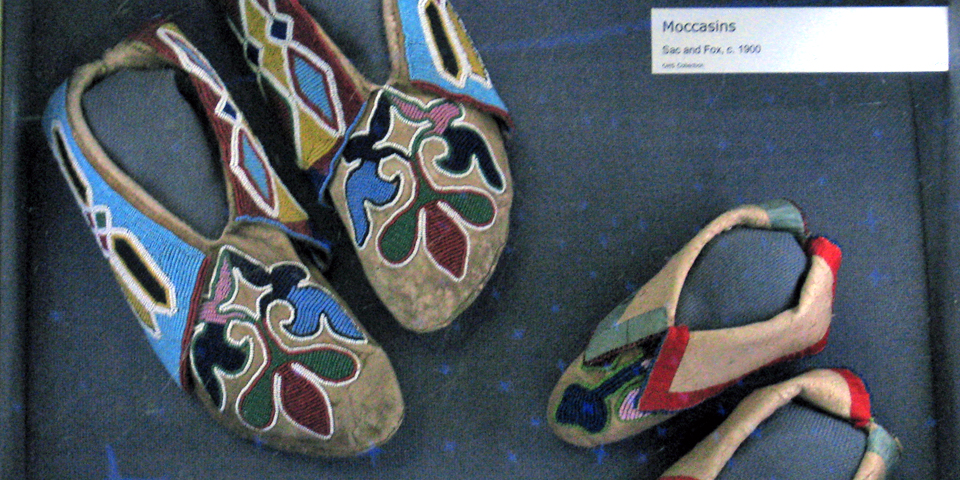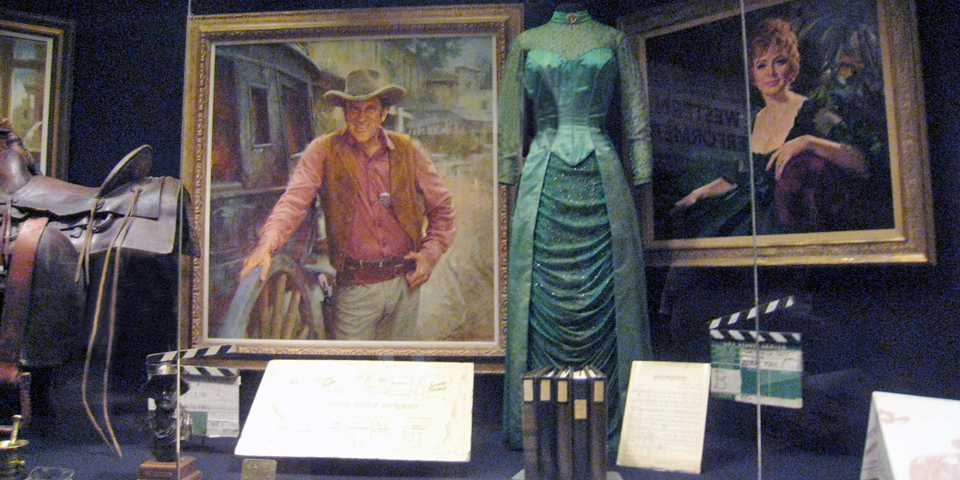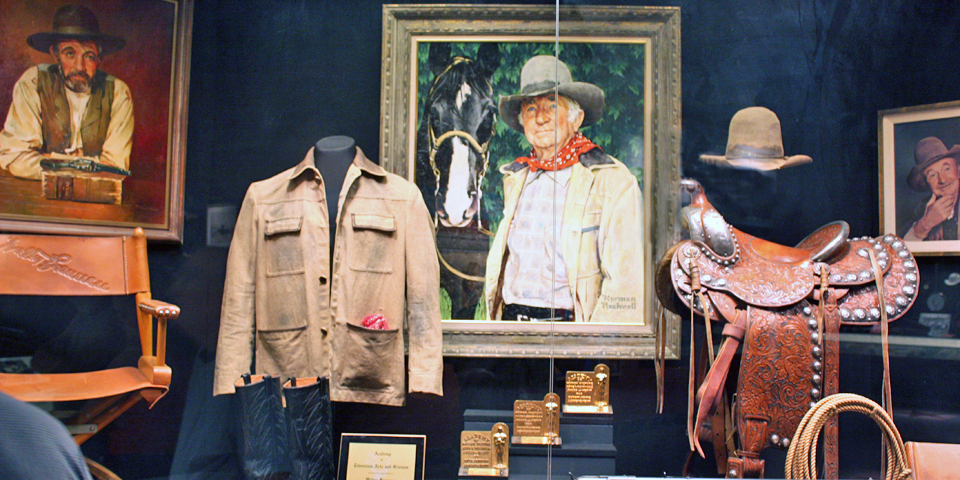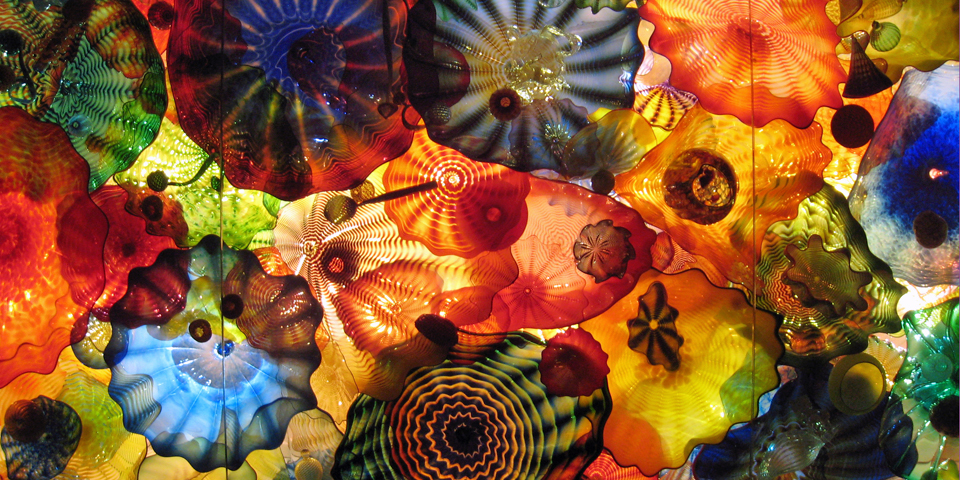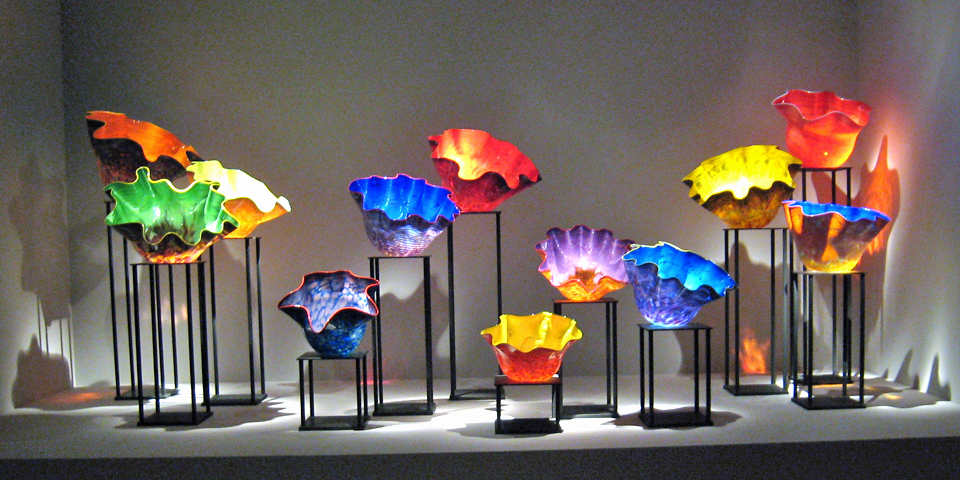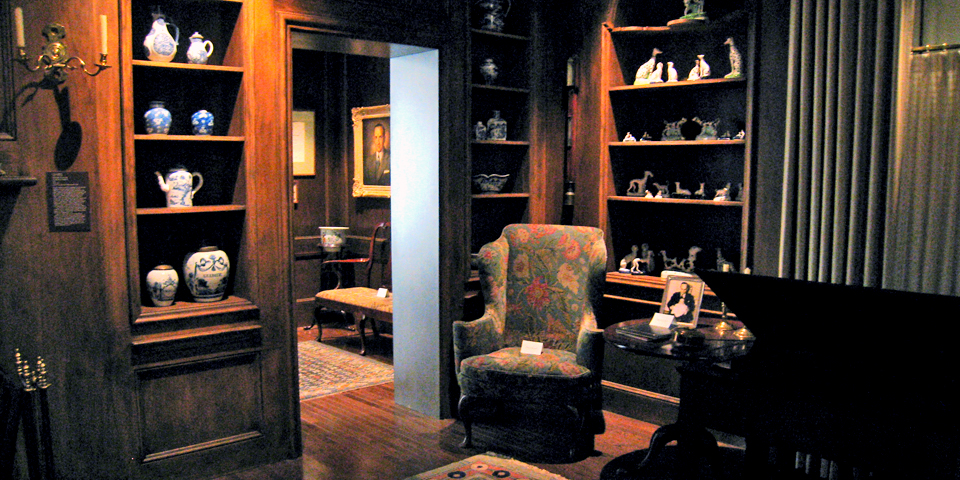Oklahoma!
Rich in a Western heritage of tribal culture, pioneers, cowboys, oil barons, and outlaws, the Sooner State, Oklahoma, celebrated its first century of statehood in 2007. Its Capitol is the only one with an oil well on its grounds, dubbed Petunia for its location in the first Lady’s flower bed.
There are more horses per capita than in any other state and eighty percent of the world’s art of the American West is here, much of it showcased in world-class museums. The National Weather Service (NOAA) Doppler radar is headquartered in Norman.
The pioneer spirit lives on in places like the Thomas Stafford Air and Space Museum, which honors the Oklahoman who attained the highest military rank of all astronauts, Lt. General Thomas Stafford. A land of brains and beauty, it is tied with California and Ohio for producing the most Miss America winners.
Named for the Choctaw “okla humma”, meaning “land of the red people”, Oklahoma is one of the six states on the Frontier Strip, where the Wild West began, and part of the Great Plains. It is one of our most geographically diverse states, with two hundred lakes, miles of rivers and creeks, four mountain ranges, two deserts, salt flats, pine forests, rolling wooded hills of the east, and most notably, the Tallgrass Prairie of the West.
Many of today’s residents are descendents of the Native Americans, Boomers, Sooners, and 89ers who survived the challenges and settled the state. Oklahoma has thirty-nine federally recognized tribes and the largest Native American population in the United States. More languages are spoken in Oklahoma than in all of Europe.
History and Heritage
Over a millennium ago, nomadic mastodon hunters and Indian mound builders roamed the area. Some say the Heavener runestone is evidence of a Vikings presence, too.
Sixteenth century Spanish explorers like DeSoto and Coronado came in search of gold and French explorers like Cavalier searched for furs. Both nations challenged one another for control of the territory that the United States eventually bought from France. Meanwhile the Plains Indians prospered in what would later be called their Golden Age.
With the Louisiana Purchase of 1803 came westward expansion and clashes with the indigenous peoples. The Indian Removal Act of 1830, opposed by people like Davy Crocket, Daniel Webster, and Henry Clay, passed by one vote and was signed by Andrew Jackson. With it, the federal government forcibly relocated the Five Civilized Tribes– Choctaw, Seminole, Creek, Chickasaw, and, finally, Cherokee— to this region deemed unsuitable for white men. Many died of exposure, disease, or exhaustion on the forced walk along the infamous Trail of Tears to Indian Territory, now Oklahoma.
After the Civil War, cattlemen on the great cattle drives on the Chisholm and Western Trails through Indian Territory discovered nutritious grasses and set up fenced areas. When the Atchison, Topeka and Santa Fe Railroad was built across the region in 1886-87, the area became even more desirable.
The Unassigned Lands in the middle of Indian Territory had not been turned over to any tribes. Prospective homesteaders known as Boomers tried to claim the land and force government to open up to homesteaders. Farmers, merchants, ranchers, and railroad men pushed for government negotiation with the Indians to give up their claim to the land. President Rutherford Hayes refused.
Two days before Benjamin Harrison took office President Grover Cleveland signed the Indian Appropriations Act of 1889, opening the 2 million acres of land to settlement. Newly-elected President Benjamin Harrison issued a proclamation authorizing what is now known as the Land Run of 1889. At high noon on April 22, 1889 a signal was given and prospective homesteaders raced in wagons, on horseback and mules, on prairie schooners or on foot to stake a claim in region now bearing such names as Oklahoma City, Norman and Guthrie.
Settlers who claimed land before the official signal– often government officials or surveyors— who went too soon were called Sooners, a term that gave the state its nickname. Oklahoma Territory was established May 2, 1890. By 1895 six land runs had transformed the region.
President Theodore Roosevelt signed a proclamation on November 16, 1907 making Oklahoma Territory and Indian Territory our 46th state. Oklahoma has the longest constitution of any state. Not surprisingly, most of it involves landowners’ rights.
Early settlers noticed a thick liquid that seeped from the ground. Plains Indians had used it for medicinal purposes. On April 15, 1897, Nellie Johnston #1 in Bartlesville became the first commercial oil well in Oklahoma. The oil boom had just begun…
Oklahoma City: art, history, entertainment
Over a century has passed since homesteaders staked their claims, and over a million people– about a third of Oklahoma’s population—now live in Oklahoma City. It’s a blend of business suits and cowboy boots, and a great place to begin a Native American and Western heritage experience.
The Oklahoma Spirit trolleys are a system that loops through the downtown area. There are underground tunnels in downtown areas.
For an authentic cowboy encounter, head for Stockyards City, a working cow town that began as a public livestock market in 1910. With stockyards and meat packing plants (Armour, Wilson), “Packingtown”, grew to be the world’s largest stocker and feeder cattle market. Get outfitted at Langston’s Western Wear, largest seller of Wrangler jeans, watch the world of cowboys working the cattle at a twice-weekly auction, and catch some of the best Western flavor at Cattlemen’s Steak House, the longest continuously running restaurant in state.
Bricktown is a popular entertainment hot spot of renovated red brick warehouses with trendy restaurants and shops. Water taxis stop at various points along a canal that runs thorough the district and past the larger-than-life sculpture park depicting the Land Run—45 figures rushing to stake a claim. Our pick for down-home dining? Toby Keith’s I Love This Bar and Grill, named for his hit song. Wait comfortably for your table in a “Redneck Loveseat”. There’s live music most Friday and Saturday nights.
The 15,000 seat Bricktown Ballpark, one of the top minor league baseball facilities in our country, is home to the Oklahoma RedHawks, the AAA affiliate of the Texas Rangers. All You Can Eat Seats include unlimited popcorn, nachos, soda, hot dogs, peanuts and cotton candy.
Oklahoma City has a top-notch Philharmonic Orchestra and Oklahoma City Ballet, Omniplex Science Museum Oklahoma, and a zoo named third best in the country. For more on the spirit, determination, and grit that created this state, there are several places that shouldn’t be missed:
Oklahoma History Center –Across from the Governor’s Mansion, this new state -of-art facility offers a comprehensive overview of the state’s unique and colorful history from prehistoric times to the space program. The entrance sculpture “Unconquered” depicts two proud warriors of one of the last tribes to be driven to a reservation, the Apaches.
Displays include an authentic Land Run wagon, a sunken 1838 riverboat, an Old West stagecoach, and a sod house, wildcatter stories, and a gallery representing the thirty-nine tribes. Pioneering aviation artifacts include the Gemini 6 space capsule flown by Oklahoman Tom Stafford’s in the first rendezvous in space and a replica of the Winnie Mae flown by “Father of Modern Aviation”, Wiley Post in the first solo flight around the world. Post discovered the jet stream and designed and wore the first pressurized flight suit.
Did you know? Wiley Post was flying with fellow Oklahoman and humorist Will Rogers when their plane crashed in 1935.
The National Cowboy & Western Heritage Museum –With fine art and firearms, cowboy gear and Native American treasures, this is our nation’s premier institution of Western history, art and artifacts. It’s a visual bonanza and internationally renowned collection of cowboy, rodeo, frontier and Native American classic and contemporary paintings and sculpture.
The image that will remain in your heart is the signature piece that dominates the entrance, James Earle Fraser’s sculpture of a Native American with his head bowed “The End of the Trail”.
American Indian Cultural Center and Museum –Scheduled to open in 2017, the museum will feature oral histories, artifacts from the Smithsonian’s National Museum of the American Indian collection, films and performances of Indian country and spirituality. The diversity of American Indian culture and traditions will be shared and celebrated in a facility designed to honor ancestors, dispel stereotypes, build relationships and promote peace and shared values.
The Memorial Museum— In west end of former Journal Record building, which withstood the worst act of domestic terrorism in US history, is a chronological self-guided tour of the sixteen days of rescue and recovery that followed the bombing of the Edward P. Murrah Federal Building on April 19, 1995.
The tour leads to the Outdoor Symbolic Memorial, a place of quiet contemplation. An inscription reads: “We come here to remember those who were killed, those who survived and those changed forever. May all who leave here know the impact of violence. May this memorial offer comfort, strength, peace, hope, and serenity.”
A field lined with 168 empty bronze and stone chairs—one for each life lost—and smaller ones for the 19 children killed intensifies the emotional nature of this site. The name of each victim is on a glass base that is illuminated by night and gives the chairs the appearance of floating by day.
Oklahoma City Museum of Art, in the downtown Arts district, has an extensive collection of European and American art. It’s a visual feast for fans of Dale Chihuly, beginning with the stunning 55 foot tall tower in the atrium, part of the most comprehensive collection of Chihuly glass in the world.
Myriad Botanical Gardens, seventeen landscaped acres, and the Crystal Bridge Tropical Conservatory, a cylindrical greenhouse, bring the flora of the world to the heart of the downtown area.
Just outside the city
Guthrie, whose population went from 0 to 10,000 in an afternoon in the Land Run of 1889, was Oklahoma’s first capital of the new 46th state. It is a living museum of 19th century architecture and the largest contiguous district on the National Register of Historic Places–1400 acres and 400 city blocks. Experience the Victorian elegance in the Scottish Rite Masonic Temple, one of the world’s largest Masonic centers, and plan to stay. It is the bed and breakfast capital of OK.
The modern red brick University of Oklahoma campus in Norman, Oklahoma’s third largest city, is home to the Sam Noble Oklahoma Museum of Natural History. At the world’s largest university-based museum you can discover Jurassic Oklahoma and see over 4 billion years of Oklahoma’s natural history in a 198,000 square foot facility. The collection includes the largest Apatosaurus skeleton ever unearthed.
Also on campus is the Fred Jones, Jr. Museum of Art. “The Fred” is distinguished by its intimate viewing spaces, particularly with the Max Weitzenhoffer Collection. This, the largest donation of French Impressionist art to a public institution in the United States, includes a notable porcelain collection displayed in three galleries, an amalgam of art and architecture designed to look like the home of the donors. The Atkins Collection includes Taos artists and Native American art of the Southwest.
Feel the spirit of the Wild West and frontier life. Hear the stories of adventure, booms, and tragedy from descendants of displaced Native Americans or pioneers. Adventures are still to be found. Be a cowboy for a day on a working ranch. Only in Oklahoma will you find this blend of tribal celebrations, rodeos, and Wild West shows, tallgrass prairie and mountain wilderness, frontier forts, historic trails, oil wells, legendary Route 66 and the legacies of the oil barons.

